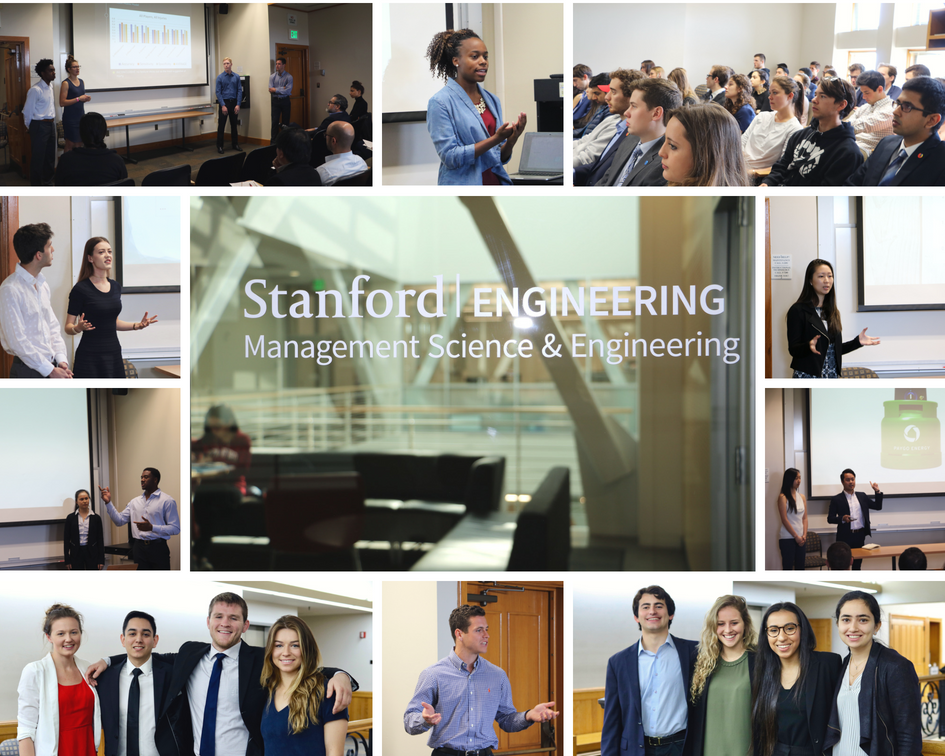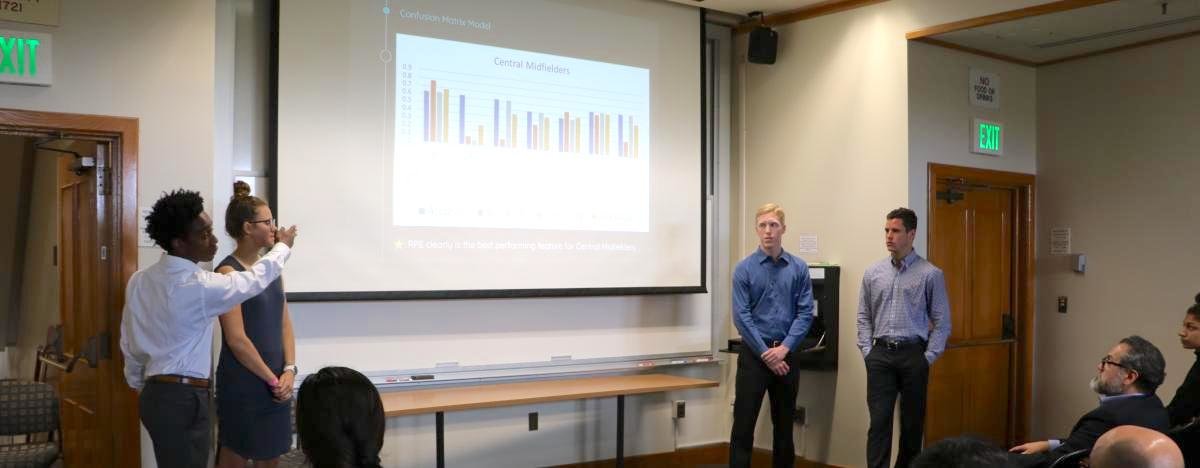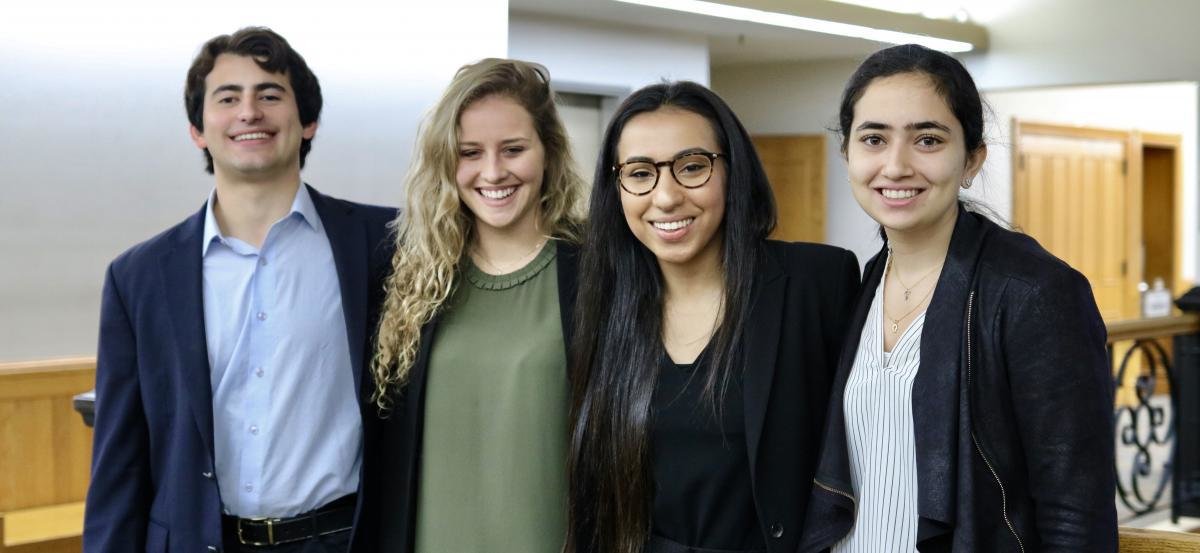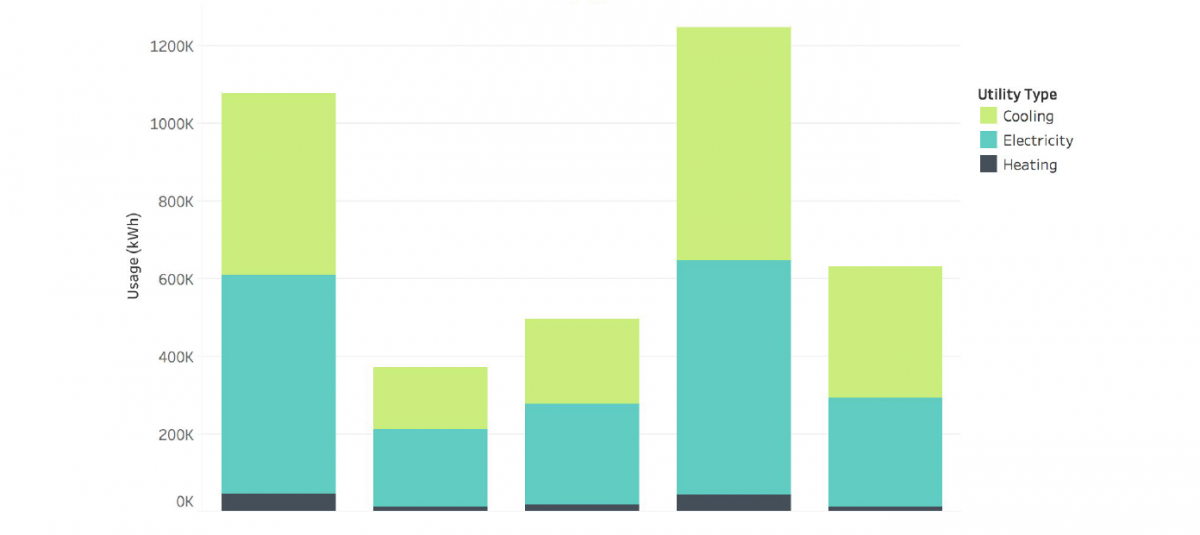2018 Senior Projects

Student teams presented their research and analysis in March, when they provided detailed solutions to both their industry sponsors and classmates.
In Winter quarter 2018, students were mentored by various MS&E faculty members (Professors Samuel Chiu, Riitta Katila, Elisabeth Paté-Cornell, and Markus Pelger) and met regularly in groups to present their work leading up to the final presentations.
Check out more specifics and summaries of four projects below:
Muscle Injuries in Soccer
Open Source Content Portal
Smart Device e-Commerce Company
Residence Hall Sustainability Audit
Muscle Injuries in Soccer

The Problem to Solve
Any sports organization wants to reduce the number and severity of injuries to its athletes while increasing their performance on the field. One professional soccer team asked MS&E: Do overtraining (practicing too hard) or undertraining (not practicing hard enough) lead to injuries? And if so, which physical metrics are most likely to predict the occurrence of an injury?
Conclusion
The student team analyzed detailed historical data on player activity and injuries from the sponsoring organization. Their analysis showed that a customized practice regimen based on a player's position and their individual muscle type can help decrease the likelihood of injury.
Open Source Content Portal

The Problem to Solve
The sponsoring organization (name omitted by request) hosts a website that contains open-source, informational content. They asked MS&E how they might increase site performance along two metrics:
- More direct traffic, as opposed to secondary traffic from a search engine
- Greater user engagement—that is, when users visit the site, how to keep them there longer?
Conclusion
The student team conducted usability testing on the look, feel, and functionality of the site. To enhance its desirability and ease-of-use, the following recommendations were made:
- Create a clear and cleaner overall design for better usability.
- Develop a Chrome extension that directly searches for content within the portal.
- Enable users to customize content to better fit their learning style.
Smart Device e-Commerce Company

The Problem to Solve
An e-commerce company wants to optimize cost and efficiency for shipping and returns for their product. The product is manufactured overseas and distributed from US headquarters, which creates complexity in the supply chain management process—especially when customers expect deliveries to be fast and free. The company asked MS&E: Should we ship via ocean or air freight? And should we assemble the product overseas or in our US headquarters?
Conclusion
The student team designed a robust supply chain management system to streamline shipping and returns. This system analyzes when to place orders from the manufacturer and for how many units—accounting for demand uncertainty, lead time, and cost. They also proposed the following strategy:
- Apply QR codes to the product packaging to manage inventory.
- Ship via ocean freight.
- Ship products unassembled from overseas, then assemble in the US.
Residence Hall Sustainability Audit

The Problem to Solve
A college residence hall has poor performance in terms of its energy usage, using more than three times more energy than other residence halls on campus. The building's management team asked MS&E: How can we increase the building's energy efficiency?
Conclusion
The student team measured how often residents used their thermostats, observed space usage in lobbies and common areas, and analyzed times of peak energy usage. They discovered that:
- Residents rarely touch their thermostats.
- Lights are kept on in common areas even though there were sometimes hours of continuous non-use.
- There is a short timespan of peak usage in the early evening, because most residents are not at home during the day.
With this information, the students proposed the following strategy to reduce energy usage:
- Install smart thermostats to replace existing devices.
- Utilize timing systems or motion sensors to minimize unnecessary lighting.
A cost analysis shows it would take less than 2 years to recover the cost of these changes, and they would save approximately 375,000 lbs of coal from being burned annually.
The residence hall installed smart thermostats in 2019 with the help of Residential and Dining Enterprises (R&DE), Stanford’s Facilities Energy Management team, and the Energy Retrofit Program. The project is estimated to reduce thermal energy consumption in the buildings by over 20% and avoid around $40,000 in operating costs per year.